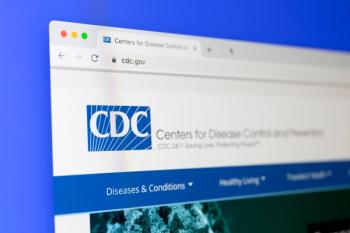
Patients With Long COVID Face Varying Trajectories, With Most Facing Symptoms Long After Infection
Key Takeaways
- Long COVID symptoms persist in 10.3% of patients at 3 months, with 81% experiencing symptoms after 1 year.
- The RECOVER study identified 8 distinct long COVID profiles, highlighting variability in symptom trajectories.
A recent study reveals diverse long COVID trajectories, highlighting the need for further research to understand symptoms and recovery variability.
Researchers from Mass General Brigham and Women’s Hospital found that 10.3% of patients 3 months post-COVID-19 infection had symptoms consistent with long COVID, and 81% continued to experience symptoms 1 year later. The investigators also found multiple possible trajectories of long COVID, highlighting the need for future studies that could elucidate why patients vary in their symptoms and recovery times.1,2
Why Is Long COVID Difficult to Predict?
Long COVID encompasses a constellation of symptoms, including fatigue, dizziness, brain fog, and others, that persist for at least 3 months following a COVID-19 infection. It is a chronic disease that can cause continuous, relapsing and remitting, or progressive symptoms, with the ability to affect multiple organ systems.1-3
Since the onset of the COVID-19 pandemic, millions of individuals have experienced long COVID, with various courses of disease reported. The clinical course of long COVID is unpredictable, and health care providers often face difficulty in diagnosing infected individuals due to the non-specific and cross-disease symptoms experienced. The limited research on the pathogenesis and treatment of persistent symptoms, combined with little understanding of COVID-19's varied trajectories, makes the disease even more challenging to treat.1-3
Investigators from the Researching COVID to Enhance Recovery (RECOVER) initiative conducted a large cross-sectional study of patients with long COVID to determine disease presence and associated symptoms. A quantitative research index was concurrently developed to determine symptoms, utilizing patient self-reporting and standardized questionnaires. Using the index and the RECOVER cohort, the current researchers sought to report long COVID trajectories and explain their notable aspects and prevalence.1,4
What Trajectories Are Possible With Long COVID?
Over 3500 adult RECOVER participants who contracted SARS-CoV-2 after December 1, 2021, were followed. Participants completed a symptom questionnaire at 3, 6, 9, 12, and 15 months following infection. The long COVID research index (LCRI) was utilized to identify patients in the cohort with long COVID. After exclusion criteria was applied, 10.3% of the cohort met symptom criteria for long COVID at 3 months by having an LCRI of at least 11. At 15 months, 10.9% of patients met long COVID criteria. Overall, 81% of the cohort experienced persistent or intermittent symptoms 1 year following infection.1,2
The researchers identified 8 distinct profiles of long COVID. These were as follows1:
- Patients who met conditions for long COVID across all visits (5%)
- Patients who intermittently met the threshold for long COVID (12%)
- Patients who had an improving but moderate symptom burden (10%)
- Patients with an improving and low symptom burden (9%)
- Participants with a worsening, moderate symptom burden (8%); patients with a delayed worsening symptom burden (6%)
- Patients with a consistent, low symptom burden (13%)
- Patients with a consistent, minimal-to-no symptom burden (36%)
Patients exhibiting persistent and high symptom burden were more often female and more likely to have been hospitalized during acute COVID-19 infection.1,2
“This study addresses an urgent need to define the differing long COVID trajectories,” Bruce Levy, MD, senior author of the study, said in a news release accompanying the results. “Our findings will help determine what resources are needed for clinical and public health support of individuals with long COVID and will also inform efforts to understand long COVID’s biological basis.”2
The data gathered in this analysis can help clinicians, pharmacists, and health care providers better understand how long COVID impacts patients and the range of possible outcomes. Patients may experience a range of severity with their symptoms, and they may appear, reappear, or intensify at variable times. It is critical that patients be proactive in monitoring their symptoms and report any concerns to their local pharmacist, who can assess for the possibility of long COVID.1
“The variability we identified will enable future studies to evaluate risk factors and biomarkers that could explain why patients vary in time of recovery and help identify potential therapeutic targets,” Tanayott Thaweethai, PhD, assistant professor at Massachusetts General Hospital Biostatistics and first author of the study, said in the news release.2
REFERENCES
1. Thaweethai T, Donohue SE, Martin JN, et al. Long COVID trajectories in the prospectively followed RECOVER-Adult US cohort. Nature. 2025;16:9557. doi:0.1038/s41467-025-65239-4
2. Study reveals insights into long COVID trajectories in adults. EurekAlert. Brigham and Women’s Hospital. News Release. Released November 17, 2025. Accessed November 18, 2025. https://www.eurekalert.org/news-releases/1106359
3. Hastie CE, Lowe DJ, McAuley A, et al. True prevalence of long-COVID in a nationwide, population cohort study. Nature. 2023;14:7892. doi:10.1038/s41467-023-43661-w
4. Horwitz LI, Thaweethai T, Brosnahan SB, et al. Researching COVID to Enhance Recovery (RECOVER) adult study protocol: Rationale, objectives, and design. PLOS One. 2023;18(6):e0286297. doi:10.1371/journal.pone.0286297
Newsletter
Stay informed on drug updates, treatment guidelines, and pharmacy practice trends—subscribe to Pharmacy Times for weekly clinical insights.














































































































































































































